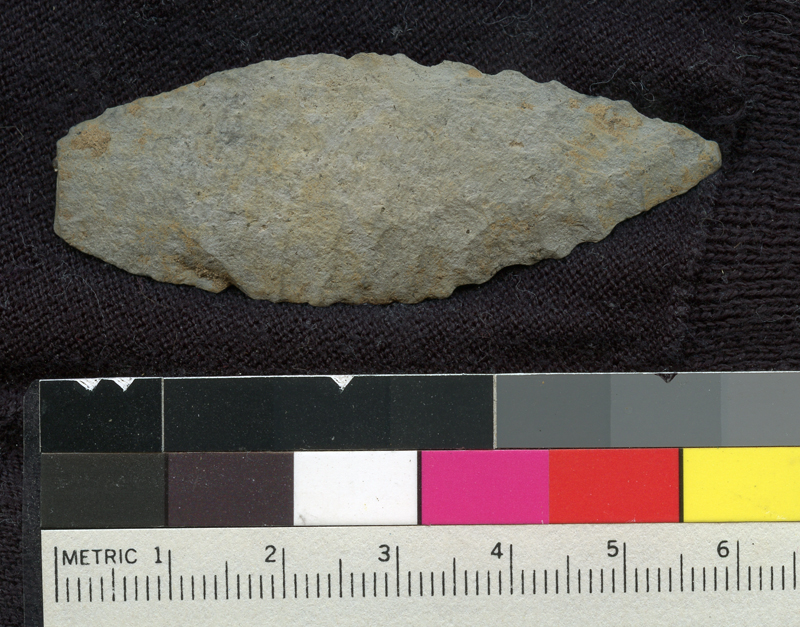This is a “willow leaf” projectile point I found in 2015 on the surface in the sandy grove at Big Bend, California. It is typical of the hunting arrowheads made by the Martis Complex (or Culture) whose range straddled the Sierra Nevada around Lake Tahoe, from this side of Pyramid Lake in the east to the foothills in the west, between 1500 B.C.E. and 500 C.E. They wintered in the foothills and plains and summered at higher elevations in the summer; this point was found at an elevation of 5,700 feet, below Donner Summit.
The point is made of basalt (rather than the more typical flint or obsidian); chert and basalt were the knapping materials of choice for the Martis. Its exact age cannot be determined.
It is likely that the Martis people had to abandon their traditional home because of a major regional extended drought that took place beginning as early as 500 C.E. and ending about 1300 C.E. No one knows what happened to them.
In an interesting twist of fate, my maternal uncle, Robert Heizer, a U.C. Berkeley anthropologist, was one of the first academics to note this culture while researching the area near Martis Valley, south of Truckee, California in 1953.
The best source on these peoples is this out of print title:
The Martis Indians: Ancient Tribe of the Sierra Nevada, by Willis A. Gortner, Portola Press (Woodside, Calif.) 1986.

Lincoln Cushing, Berkeley, California
Return to Docs Populi - Documents for the Public